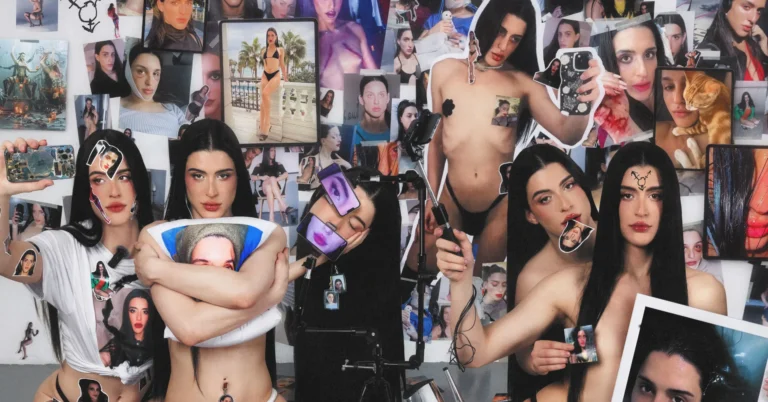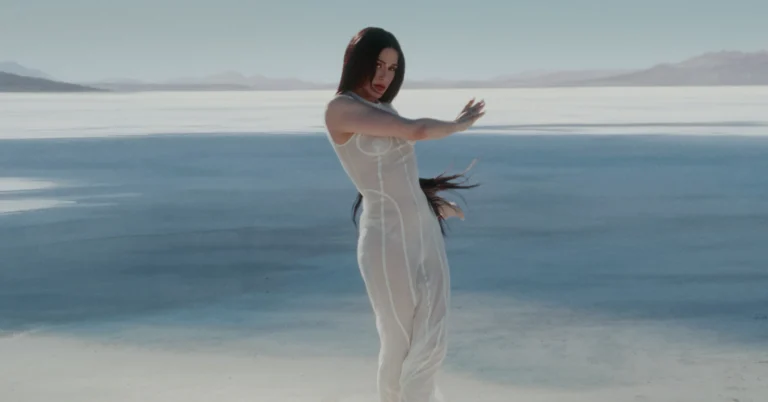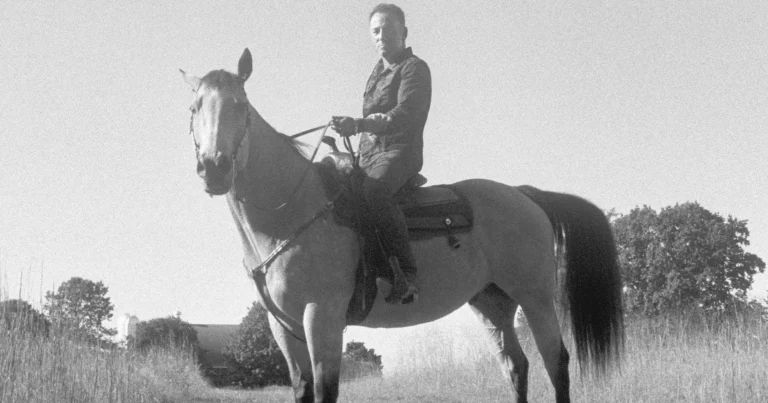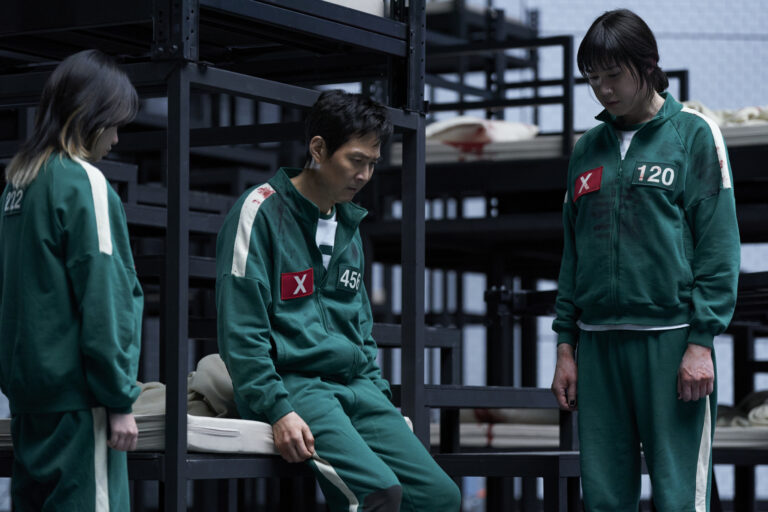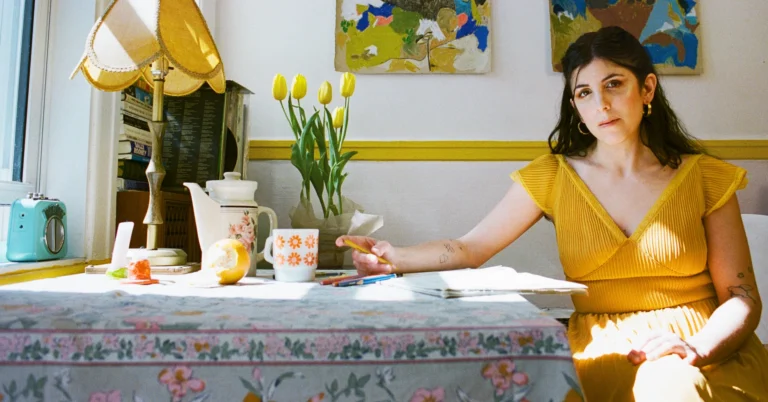There’s so much music coming out all the time that it’s hard to keep track. On those days when the influx of new tracks is particularly overwhelming, we sift through the noise to bring you a curated list of the most interesting new releases (the best of which will be added to our Best New Songs playlist). Below, check out our track roundup for Wednesday, May 14, 2025.
Arca – ‘Puta’ and ‘Sola’
Arca has returned with two new tracks. ‘Puta’ is the dreamier one, while ‘Sola’ is sultry and playful. “‘Puta’ and ‘Sola’ are songs I’ve been perfecting for years,” Arca shared. “Taking my time writing, recording, producing and mixing them on my own, slow cooking, has been important to getting the music just right. I’m so proud of these songs, and both Daniel Sannwald and Stillz are geniuses; the videos are so amazing. The themes lyrically span both extravagant sensuality for the dancefloor on “Puta” as well as the vulnerability of tenderness and love in ‘Sola’. I hope they bring joy and comfort as well as confidence to all my fellow mutants!”
Bruce Springsteen – ‘Repo Man’
Bruce Springsteen has unveiled ‘Repo Man’, a jaunty honky-tonk tune from his lost country album Somewhere North of Nashville. “What happened was I wrote all these country songs at the same time I wrote The Ghost of Tom Joad,” Springsteen explained. “Those sessions completely overlap each other. I’m singing “Repo Man” in the afternoon and “The Line” at night. So the country record got made right along with The Ghost Of Tom Joad. “Streets Of Philadelphia” got me connected to my socially conscious or topical songwriting, so that’s where The Ghost Of Tom Joad came from. But at the same time, I had this country streak that was also running through those sessions, and I ended up making a country record on the side.”
Nick León – ‘Ghost Orchid’ [feat. Ela Minus]
South Florida-based DJ and producer Nick León has announced his debut LP, A Tropical Entropy, with the intoxicating Ela Minus collab ‘Ghost Orchid’. The record also features contributions from Erika de Casier, Casey MQ, Xander Amahd, Jonny from Space, Esty & Mediopicky, and Lavurn.
yeule – ‘Dudu’
yeule has shared a new single, ‘Dudu’, the latest from their forthcoming album Evangelic Girl is a Gun. According to yeule, it’s a song about “unrequited love and stifling yourself,” though it sounds pretty infectious and carefree.
The Lemonheads – ‘Deep End’ and ‘Sad Cinderella’ (Townes Van Zandt Cover)
The Lemonheads have shared ‘Deep End’, a rugged rock jam that features J Mascis on guitar, former Lemonhead member Juliana Hatfield, and Australian singer-songwriter Tom Morgan of Smudge. Its flipside is a cover of Townes Van Zandt’s ‘Sad Cinderella’, sung by Evan Dando and Nashville singer-songwriter Erin Rae as a duet.
Little Simz – ‘Young’
Little Simz has dropped a playful new song, ‘Young’, taken from her upcoming album Lotus. “I was able to tap into a character,” the rapper said. “That was fun for me. It’s just a moment of light heartedness.”
Elias Rønnenfelt – ‘Carry-On Bag’
Iceage frontman Elias Rønnenfelt has released a new song, ‘Carry-On Bag’, which is warped and jagged. It marks his first solo music since last year’s Heavy Glory.
Rocket – ‘One Million’
Los Angeles band Rocket are back with another swirling, infectious track, “‘One Million’ is about wanting someone to meet you halfway but not knowing if they ever will,” they explained. “It’s the feeling of doing everything you can, going above and beyond for someone, knowing that you would wait a million years for them just to notice how important they are to you. It’s the hoping that maybe you are as important to them as well. It’s learning to be okay with the fact that you might always love them more.”
Jamie Lidell – ‘The Center’
Jamie Lidell has announced Places of Unknowing, his first album in nine years, arriving this summer. It’s led by the cinematic and luscious single ‘The Center’.
Billie Marten – ‘Swing’
Billlie Marten has shared a new single from her upcoming LP Dog Eared, the rootsy, wonderful ‘Swing’. “I wanted it to sound like the Meat Puppets-meets-The Breeders,” the singer-songwriter remarked. “I think we got pretty close without sharing any influences in the studio. This one’s funny because we had Mauro Refosco (who does percussion on nearly every song) try out lots of different things, and in the end, producer Phil just turned all of his tracks up at once and what you’re hearing is every pass that he did. It’s awesome. The bass is also supremely loud. The last addition to the record was Sam Amidon with his fiddle part, which the song would be nothing without.”
The Bug Club – ‘Appropriate Emotions’
the Bug Club have shared ‘Appropriate Emotions’, the breezy final single from their forthcoming album Very Human Features. I love the little laugh that escapes after the final chorus. “Go have a listen feel the feelings have a little cry then have a little dancey rinse and repeat,” the band commented.
Hard Chiller – ‘Hotboxhead’
Hard Chiller – the band composed of From Indian Lakes’ Joey Vannucchi, Steve Choi of RX Bandits and the Sound of Animals Fighting, Casey Deitz of the Velvet Teen on drums, and Roger Camero of the Warriors and No Motiv on bass – have announced their debut full-length. BABY! is due August 1, and the blistering lead single ‘Hotboxhead’ is out now. “Joey’s vocals are able to give everything wings, so I wanted some head-nod vibes being lifted by his melodies,” Choi commented. “The working title for this song was ‘lofty’ because this chorus elevates my mood.”
Wavves – ‘Spun’
Wavves has a snarky pop-punk tune out called ‘Spun’. It’s the title track from the upcoming album that drops June 27 via his own Ghost Ramp label.
Graham Hunt – ‘Been There Done That’
Graham Hunt has released a groovy new track, ‘Been There Done That’, from his forthcoming album Timeless World Forever. “I had Covid when I wrote this song,” he shared. “I tuned every string on my guitar to a random pitch and put my fingers in different places until it sounded good. I didn’t write down how to play it so I had to do my best to translate what I was doing in my voice memo demo to my normal tuning when I got around to recording the song for real. Initially shelved it in its original form as an Elliott Smith style sad acoustic song, it got wheels when I had my friend Stu Manley lay down some funky drums. The lyrics add up to something very specific to me that I’m not interested in sharing. I think it’s cool that they will probably mean something completely different to someone else.”
Coral Grief – ‘Rockhounds’
Coral Grief – the Seattle trio comprising singer and bassist Lena Farr-Morrissey, guitarist Sam Fason, and drummer Cam Hancock – have announced their debut album, Air Between Us, arriving July 18. “We were committed to the three piece way of doing things, but wanted to make it sound as lush and as full as possible,” Fason explained. The lead single ‘Rockhounds’ is sunny and enchanting.
